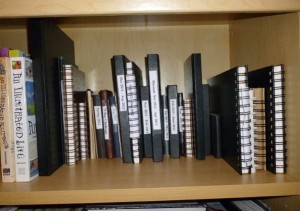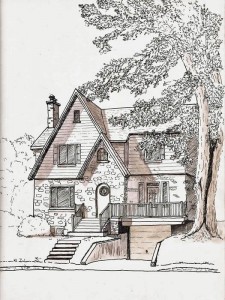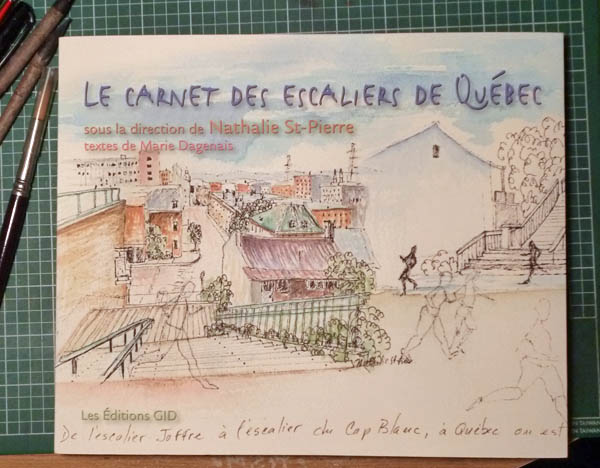These lyrics, sung long ago by Johnny Horton, tell of the final battle of the War of 1812 where Americans defeated a British invasion force. The song was a big hit when I was a kid and every time I head to Quebec’s Ile d’Orleans that song rattles around in my brain. Truth is, the French had their own battle against a British invasion and Wolfe, the leader of that invasion force, nearly died when his ship ran aground just off the coast of the island, and within cannon distance of the French forces.
But war is not the topic of today’s post. Rather, it is about a trip I took recently to Ile d’Orleans to sketch. I use ‘trip’ loosely as it takes all of fifteen minutes to get there as you can see Ile d’Orleans from Quebec City and vice versa. Going to the mall takes longer.
Ile d’Orleans is a big island in the St. Lawrence River, just as it widens from its narrowest point, at Quebec City, on its way to the Atlantic Ocean. There are six municipalities on the island, though I have a hard time determining where one begins and another ends. What I know is that the island is gorgeous and I love my time there. A lot of vegetable and fruit growing goes on, and it’s a very popular tourist location.
I’ve sketched on the island but I’ve never gone there alone, with the singular goal of sketching. This day, I was on a mission. The sun was out, I had sketchbooks a plenty, and I’d arranged to have our car for the day. I arrived on the island about 8:45 and drove to the backside of the island to a pier that juts out into the St. Lawrence. I discovered it when I was with my buddy Nicolas and we were like a couple kids, chasing the Queen Elizabeth II as she passed along the southern coast of the island on her approach to Quebec City.
I walked out onto the pier, set up my stool and began sketching. You know what? Sun doesn’t help much when there’s a 20-30km/h wind blowing across a large body of water and its hyper-cooled air is cutting you in half. I was COLD!!! At one point I went back and sat in the car for a while to warm up but, finally I finished the sketch. I was a bit too much in a hurry, do you blame me, and ended up with some paint blooms in the foliage because my previous wash wasn’t yet dry, but them’s the breaks.
I was really cold when I finished and so headed for a place I knew that serves wonderful brioche and good, hot coffee. Unfortunately, the winds had blown out their electricity – no coffee. So, I bought a brioche and sat in the car, with the heater running, to warm up.
Across the street from the café is a church and a cemetery. I keep telling myself that I should draw more in cemeteries as I love the shapes of the grave stones and their helter-skelter orientations, probably caused by the annual freezing and thawing of the ground. I found a view I liked, went back to the car to get my stuff and I was soon sitting in the cemetery sketching. This was a little better as there was a stone wall around the area that broke some of the wind. I was only semi-frozen when I finished this one.
I was getting ready to leave. Actually I was turning around in the church parking lot when my eye caught a “Privé” sign and a lamp post. I love to have such things in my sketches and so I decided to sketch this scene. Once again, however, I would be fully-exposed to that darn wind coming off the St. Lawrence. I am old but even I can learn new tricks. I positioned the car so I could sketch while sitting inside. About halfway through I was wishing I had a hacksaw to eliminate the steering wheel but it worked out ok once I got the hang of it.
There’s so much to sketch on the island that I could go there every day and not get bored. In another couple weeks the trees should be putting on their annual ‘fall colors’ light show and I’m going back ‘real soon.’












